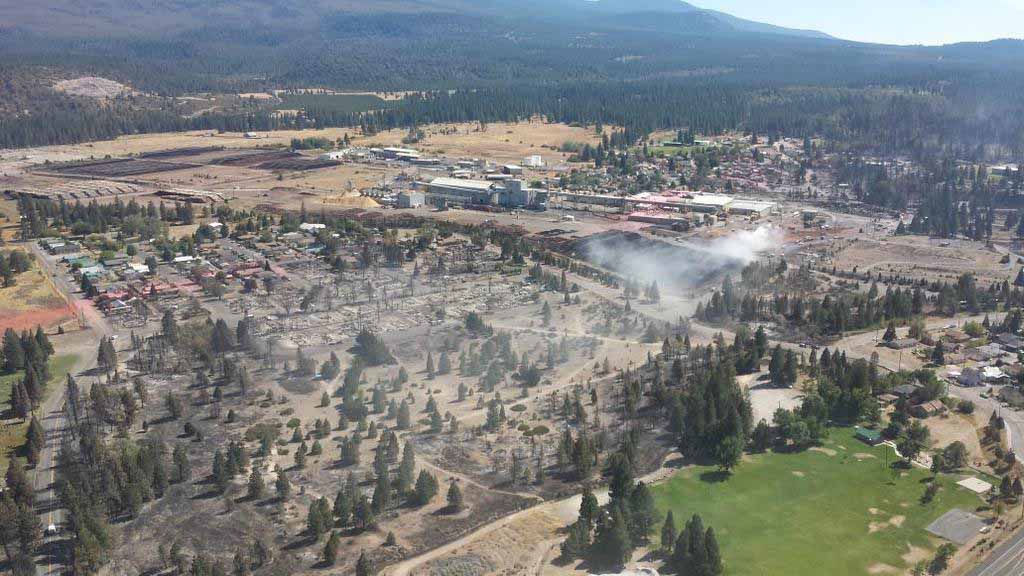
On Saturday, October 11, Police arrested a man for starting the Boles Fire that destroyed 157 residences and 8 commercial structures last month. Ronald Beau Marshall was charged with felony counts of arson to inhabited structures, property and forest land. The 516-acre fire wiped out a significant portion of the small town of Weed in northern California September 15.
Below are excerpts from an article in the Redding Searchlight:
“He was a person of interest from the first night,” [Weed Police Sgt. Justin] Mayberry said, adding that officers identified Marshall shortly after the fire started on Sept. 15.
Marshall is in jail in lieu of $250,000 bail, according to Siskiyou County Jail records.
The investigation was complicated and required detailed analysis, Siskiyou County District Attorney Kirk Andrus said Saturday night.
“It involved fire-origin science and detailed work to uncover all of the circumstances and evidence,” Andrus said. “Rarely are arson-related events completely straightforward,” he added.

Thanks and a tip of the hat go out to Chris.

I think the use of retardant on this fire speaks for itself. It helped a helluva lot
There are pretty firm guidelines that ATGS have to meet to put retardant in “built-up areas”. In the 1970s in Baker (now called Baker City), Oregon a load of retardant in a log mill fire picked up a log from the deck and shot it thru the window of a nearby passenger car.
Good coordination between the ground and the air is critical in these kinds of settings.
I’m curious what others think of the use of aerial retardant drops on fires such as this. There are at least two areas visible in the photo with retardant.
Don, I’m not sure what you’re referring to but this tactic is used in wildland interface fires where I work. Limiting the spread of the fire along the flanks. There are limited opportunities to work the head of a fire such as this (extreme wind driven event).